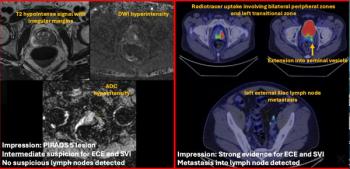
ACR Launches Clinical Imaging Research Registry™
Registry brings together images and clinical data from multiple practice settings to help answer questions and produce results.
The American College of Radiology (ACR) announced the launch of its ACR National Clinical Imaging Research Registry™ (ANCIRR™) on Monday.
This initiative brings together six current and eight planned registries that will collect and organize both images and clinical data from a variety of practice settings. The goal is creating large data sets that will help researchers with investigations that impact multiple care settings, geographic locations, and populations.
“The ACR National Clinical Imaging Research Registry™ (
ANCIRR’s focus differs from the National Radiology Data Registry (NRDR®) that concentrates on enabling practice quality improvement through site feedback and peer benchmarking.
This innovation, which is driven by the ACR Center for Research and Innovation and ACR Informatics, is critical, ACR leaders said, because observational studies borne out of registries are becoming increasingly important in research and the development of randomized clinical trials and retrospective studies, moving the fields of medicine forward.
“The ANCIRR provides seamless data and image collection through the ACR TRIAD and ACR Connect suite of tools to support clinical research, quality improvement initiatives, artificial intelligence development and evaluation, regulatory submissions, and other new technologies,” said Christoph Wald, M.D., Ph.D., MBA, FACR, chair of the ACR Informatics Commission.
The ACR is well positioned to pursue and reach this goal, said Pamela K. Woodard, M.D., FACR, chair of the ACR Research Commission.
“The ACR has a unique ability to create curated, integrated diagnostic datasets of multi-institutional data,” she said. “This ability to leverage electronic health records can fulfill the promise of digital data, aid health equity efforts and lead to more targeted patient care.”
Work for the ANCIRR is ongoing. The COVID-19 Imaging Research Registry (CIRR), the newest of the six current registries, is now operating. It will be a primary data collection pathway for the National Institute of Biomedical Imaging and Bioengineering-funded Medical Imaging and Data Resource Center which has the potential to become the largest world-wide COVID-19 medical imaging archive. In addition, CIRR provides COVID-19 images to the Society of Critical Care Medicine VIRUS COVID-19 Registry and the National Heart, Lung, and Blood Institute PETAL Clinical Trials Network.
For more coverage based on industry expert insights and research, subscribe to the Diagnostic Imaging e-Newsletter
Newsletter
Stay at the forefront of radiology with the Diagnostic Imaging newsletter, delivering the latest news, clinical insights, and imaging advancements for today’s radiologists.




























